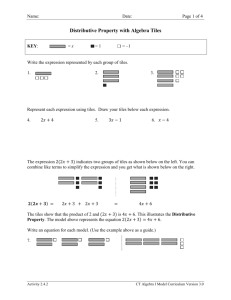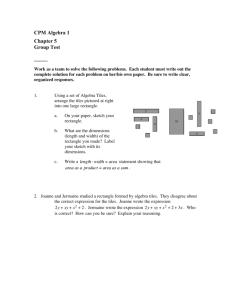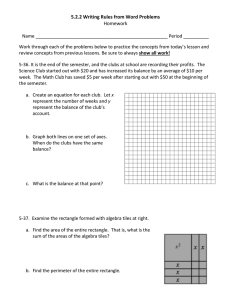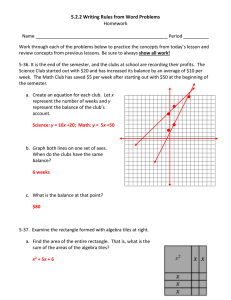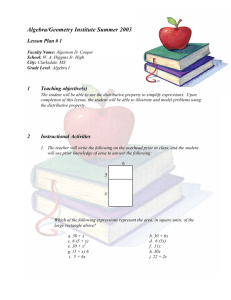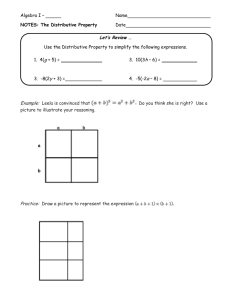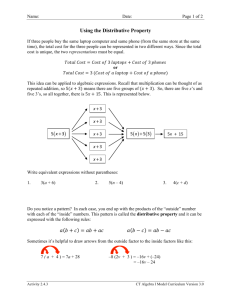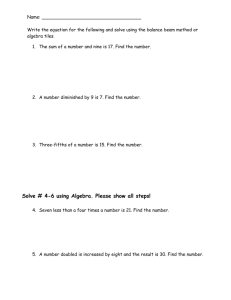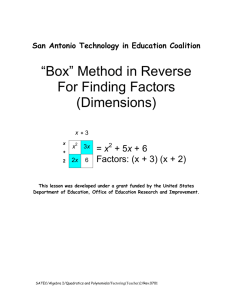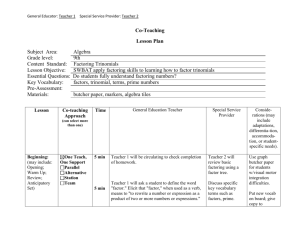Distributive Property with Polynomials
advertisement
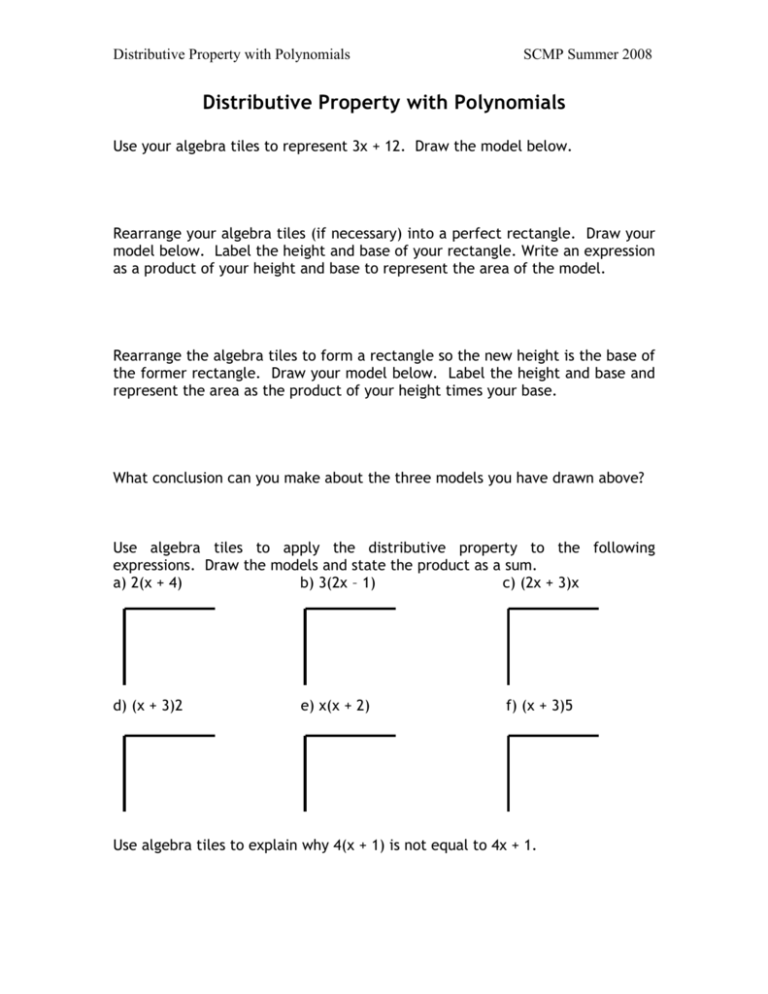
Distributive Property with Polynomials SCMP Summer 2008 Distributive Property with Polynomials Use your algebra tiles to represent 3x + 12. Draw the model below. Rearrange your algebra tiles (if necessary) into a perfect rectangle. Draw your model below. Label the height and base of your rectangle. Write an expression as a product of your height and base to represent the area of the model. Rearrange the algebra tiles to form a rectangle so the new height is the base of the former rectangle. Draw your model below. Label the height and base and represent the area as the product of your height times your base. What conclusion can you make about the three models you have drawn above? Use algebra tiles to apply the distributive property to the following expressions. Draw the models and state the product as a sum. a) 2(x + 4) b) 3(2x – 1) c) (2x + 3)x d) (x + 3)2 e) x(x + 2) f) (x + 3)5 Use algebra tiles to explain why 4(x + 1) is not equal to 4x + 1.
